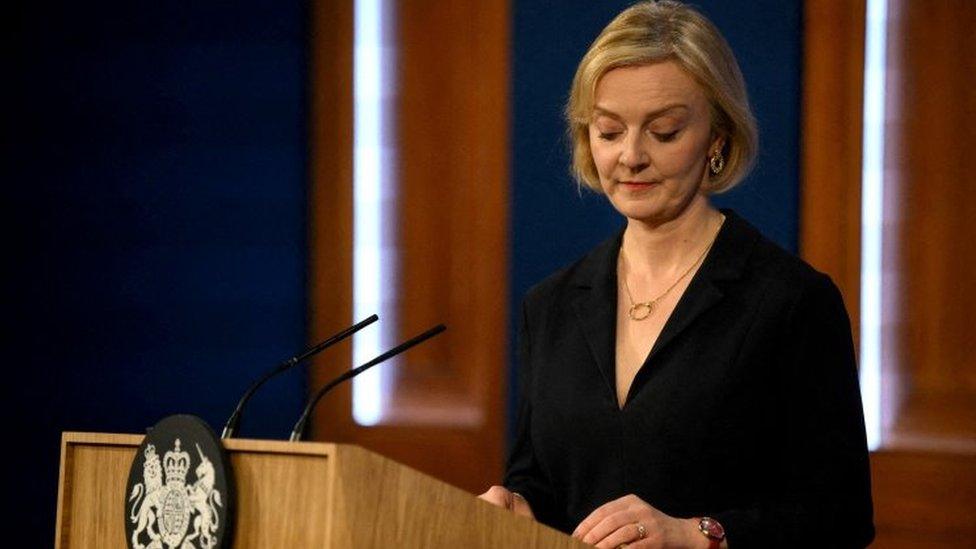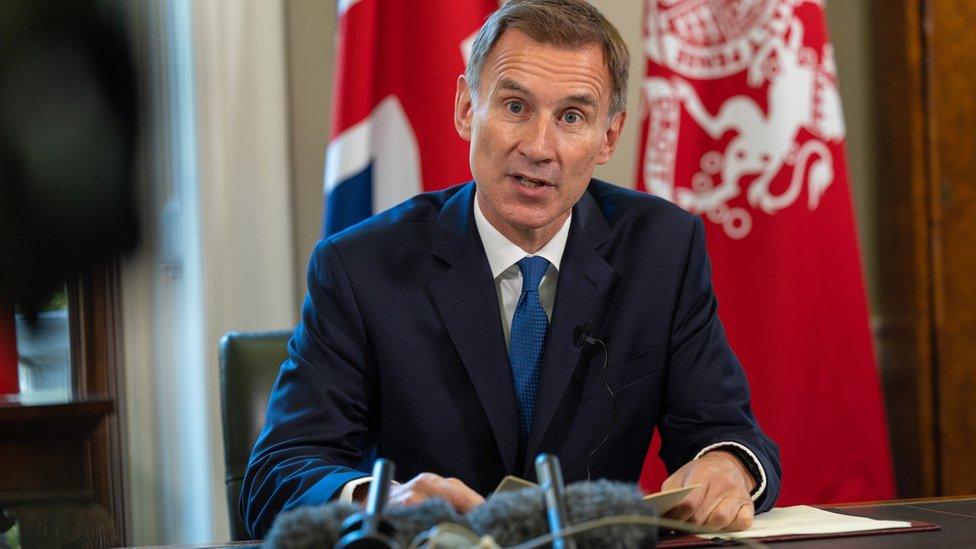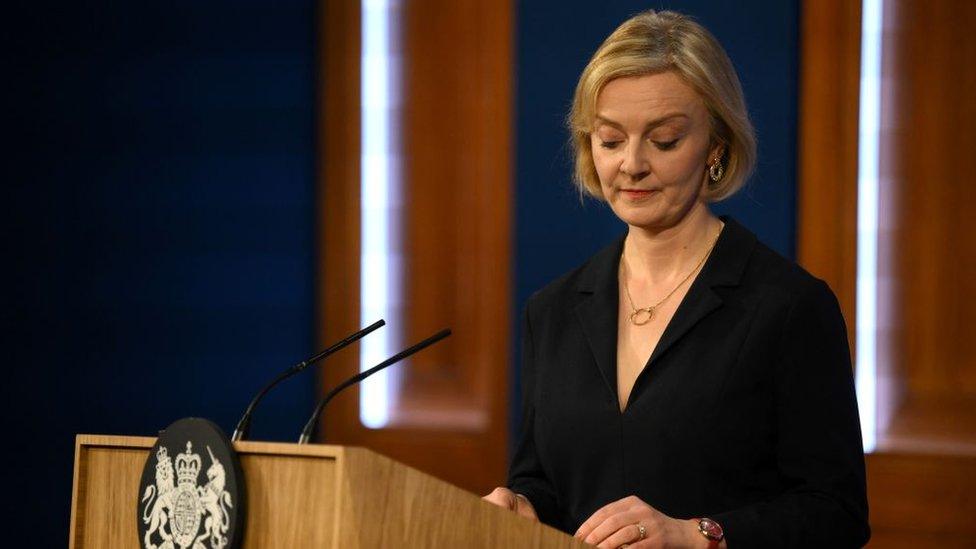Liz Truss: How might Tory MPs get rid of the prime minister?
- Published

Prime Minister Liz Truss has faced calls to resign since U-turning, last week, on one of her key economic policies
Prime Minister Liz Truss's premiership is in peril, with her MPs plotting ways to oust her. But there are no easy options nor any consensus on what should happen next, in a deeply divided party. Here are some possible scenarios.
1. Truss resigns
This is the simplest and cleanest option for Tory MPs.
At present, there is no suggestion Ms Truss will resign of her own accord - but her decision to sack Kwasi Kwarteng as chancellor and scrap most of her economic plan has sapped her of political authority. And if more MPs call for her to stand down, she may jump before she is pushed.
If Ms Truss doesn't resign, her cabinet could move against her with a wave of resignations, as with Boris Johnson earlier this year. This seems unlikely given key members of Ms Truss's cabinet - which is full of loyalists - have united behind her and the actions taken by her new Chancellor, Jeremy Hunt.
Should Ms Truss resign, she would remain in post until her successor formally took over.
2. They change party rules
Under Conservative Party rules, Ms Truss is safe from a confidence vote for a year after entering office - but the rules could be changed.
The likelihood depends on how many Tory MPs submit letters of no confidence in Ms Truss's leadership to Sir Graham Brady, who chairs the 1922 Committee representing all backbench Conservative MPs.
If there are enough, he may feel compelled to tell the prime minister there is widespread demand to change the rules and allow a vote on her leadership.
Sir Geoffrey Clifton-Brown, who sits on the executive of 1922 Committee, told BBC News such a change would require the support of a "large majority" of Conservative MPs.
Watch: The 1922 Committee explained in 90 seconds
But two more backbenchers will be elected to the executive on Tuesday - and if they are among those wanting to remove Ms Truss, they could also push for rule changes to make it easier.
MPs could then opt for further rule changes to arrange a "coronation".
In usual circumstances, Tory MPs vote to whittle down a field of leadership candidates to two, who progress to a run-off decided by the party's membership. But there is no appetite for another long and divisive leadership contest so soon after the last.
Instead, one scenario could see the 1922 executive set a higher bar of 100 nominations for Tory MPs to enter the race to replace Ms Truss, encouraging the parliamentary party to rally around a unity candidate.
Ben Wallace, Rishi Sunak and Penny Mordaunt are the three names being widely discussed. But in a fractious party, none is universally popular. And the lack of a clear successor may give Tory MPs pause for thought and Ms Truss more time to win them over.
3. They trigger a general election
If the Tories can't remove the prime minister on their own, the prospect of a general election could come into play.
In Parliament, one mechanism to trigger a general election is a motion of no confidence in the government. If Labour tabled such a motion, the government should - by convention - allow time for a debate and vote in Parliament.
For the motion to pass, more MPs need to vote in favour of toppling the government than against.
If the government loses a no-confidence vote in the House of Commons, the prime minister will be expected to resign or ask the King to dissolve Parliament, triggering a general election.
But given how far the party has fallen in the polls, it is very unlikely many Tory MPs would vote down their own government.
Related topics
- Published17 October 2022

- Published17 October 2022

- Published17 October 2022